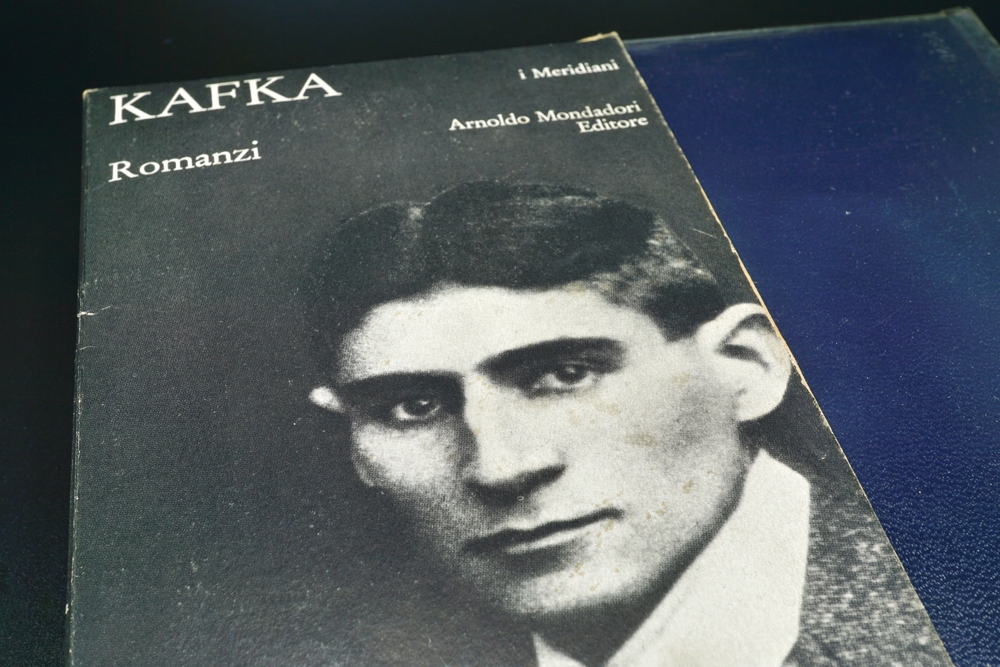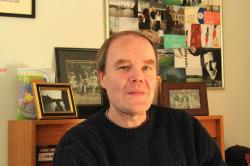Should we blame Max Brod? Brod was almost certainly the nearest thing Franz Kafka ever had to a friend, and in time Kafka appointed him his literary executor. The instructions he gave were unequivocal: all the work that remained unpublished on his death, which came on June 3, 1924, including three novels and a large number of stories, was to be promptly destroyed. Brod ignored this and instead devised a schedule for the material’s publication. It began with The Trial in 1925, followed by The Castle in 1926 and Amerika in 1927. English translations by the married couple Edwin and Willa Muir started to appear in 1930 with The Castle, the book Kafka had abandoned shortly before his death at the age of 40, a victim of tuberculosis that in its final stages made the act of swallowing so painful he succumbed to starvation.
In later years, Brod insisted that he had accepted the role of Kafka’s executor only after advising him that he would refuse his instructions to destroy his work. He seems to have concluded that if Kafka had been truly serious about this, he wouldn’t have appointed him to the job in the first place. Brod’s case was a good one, but it also helped set an unfortunate precedent. Whatever one thinks of books such as Ernest Hemingway’s The Garden of Eden, Vladimir Nabokov’s The Original of Laura, and Harper Lee’s Go Set a Watchman, all published posthumously, or, in Lee’s case, in the author’s extreme dotage, not one of them can be said to have burnished its author’s reputation. In the case of Philip Larkin, many of the great poet’s admirers can only have groaned on the appearance of a volume of letters brought out seven years after his death that revealed him to have been seething with racist prejudices. It took a long time for Larkin’s reputation to recover from these wounds, if indeed it truly ever has.
But to return to The Castle, which Kafka was writing effectively up to the moment of his death: What happened, and, perhaps more to the point, what does it have to say both about the author’s state of mind and the vexed matter of his spiritual beliefs as he consciously approached the end of his life?
In January 1922, Kafka went on a rest cure to the ski resort of Spindelmühle, set amid the snow-capped Giant Mountains in the modern-day Czech Republic. He was then 38 and a figure pitiful in his suffering. He had tuberculosis, boils, hemorrhoids, and toothache. Not surprisingly, he felt himself at odds with his fellow guests at the resort, writing in his diary of his “endless astonishment when I see a group of people cheerfully assembled here.” Later in his stay, Kafka admitted to seeing his situation in the world—in broken health and penurious, if not quite alone, since he was in a relationship with the 25-year-old Czech writer Milena Jesenská and a devotee of the local bawdy houses—as “a dreadful one, here in Spindelmühle, on a forsaken road, moreover, where one keeps slipping in the snow in the dark, without an earthly goal,” itself perhaps a metaphor. Elsewhere Kafka told himself that “I am fond of lovers but cannot love, I am too far away” and that “I live elsewhere.” Were Milena actually to appear in Spindelmühle, it would be “dreadful” because it would merely expose him to a “human world” in which he felt unable to live.
Not one of life’s inveterate optimists, in other words. In the late 1980s, a photograph came to light that apparently shows Kafka arriving in Spindelhülme. He is seen loitering by the side of the horse-drawn sleigh that has brought him on the last leg of the 100-mile journey from Prague. Perhaps aptly, the figure who may or may not be Kafka stands a little apart from his fellow passengers, his features blurred by snow, but a faint smile discernible on his lips. It is dusk, and something about the scene hints at a sense of menace, of isolation, of being excluded. These are all ingredients present in the opening pages of the novel Kafka began writing by gaslight in his small upstairs room at the hotel later that night.
“It was late evening when K. arrived,” the book opens in its most popular (though far from universally admired) English translation. “The village was deep in snow. The Castle hill was hidden, veiled in mist and darkness, nor was there even a glimmer of light to show that a castle was there. On the wooden bridge leading from the main road to the village K. stood for a long time gazing into the illusory emptiness above him. Then he went on to find quarters for the night.”
And so we’re off, into the realm a later generation would come to know as “Kafkaesque.” It draws on a prose style heavily laden with subtext, yet capable of the deft physical sketch and declarative tone (“The village was deep in snow … Then he went on to find quarters”) that might not have disappointed Kafka’s near-contemporary Hemingway, himself then just starting off as a writer in Paris.
In its published form, The Castle is the story of K., who claims to be a land surveyor, sent by a party or parties unknown, for some purpose unknown, to the Castle, itself an unknown quantity. What particular job or function K. is supposed to undertake while on the premises we never discover. Rather than offer the reader a traditional narrative, Kafka instead falls back on the agencies of shadow and mood, with the omnipresent shroud of snow as a device to convey that oppressively claustrophobic atmosphere that was his stock in trade. Readers familiar with the works of Harold Pinter need only think of one of that playwright’s simultaneously comic and disturbing theatrical games of hide-and-seek, with the added touch of man’s futile struggle against an unfeeling and often unseen authority that remains the throughline of Kafka’s own oeuvre, to get some of the flavor. In The Castle, K.’s letter of appointment directs him to report to a Chairman for further instructions, but this individual tells him: “We don’t need a surveyor. … The boundaries of our small holdings have been marked out, everything has been properly registered [and] … whatever small disputes arise, we settle ourselves.” It only adds to the inscrutability of the novel as a whole to note that the text ends abruptly in mid-sentence. On September 11, 1922, Kafka wrote to Brod to inform him that he was giving up on the book and would never return to it. He was dead just over a year and a half later.
Some critics see The Castle as a religious allegory, with K.’s struggle to make sense of his commission denoting man’s eternal search for the meaning of life. There seem to be a whole host of clues supporting this reading of the novel, some dropped by the book’s author, others perhaps existing more in the imagination of its readers. Among other things, the story features a character named Galater, the German word for Galatians, and another one called Barnabas, by tradition one of the most prominent of the early disciples, while the notion of the seeker proverbially or literally knocking at the door surely has its roots in the text of Revelation 3:20. In so far as there’s a modern critical consensus about the book, it’s that of a parable about man’s search for identity, or, more narrowly, a Jew’s for acceptance in Gentile society.
Setting aside The Castle, how should we treat the matter of Kafka and religion? It’s surely not enough to ascribe, as many have, the word “atheist” to an author whose recurrent themes—guilt, redemption, grace, inquisitiveness, absolute might, sacrifice—are impossible to discuss outside the bounds of religious discourse. Like his preferred literary milieu, Kafka himself seems to exist in the realm of paradox, a man who resolutely shunned the lure of organized worship—with its threat of communion with total strangers, a notion he abhorred—but who called his writing “a form of prayer” and eventually became an object of something like religious awe to an otherwise largely agnostic intelligentsia. It may be that Kafka was in fact a profoundly spiritual artist in obsessively seeking to ward off the specter of nothingness, even if choosing to do this outside the sphere of any group united by a common ritual.
Consider, for instance, the moment in September 1911 when the 28-year-old Kafka, the son of an orthodox Jew, attended the Starnová Synagogue in Prague for Yom Kippur, where he recorded in his notebook the presence of three pious worshippers “bowed over their prayer books, their prayer shawls drawn over their heads, becoming as small as they possibly can.” His writer’s eye was incapable of ignoring the faintly ludicrous aspects of self-abasement before an unseen deity. But in a candid note to himself, he admitted that he was also “profoundly moved” by the experience of a “calm devotion” to one’s Maker. In later years, Kafka told Milena Jesenská that he considered himself a representative case of a Western Jew. “This means, expressed with some exaggeration, that nothing is granted me, everything has to be earned, not only the present and the future, but the past, too: the life which every human being has inherited—this too must be earned.”
Another letter to Milena contained the revelation that the sexual urge, which seems to have been notably well developed in this otherwise retiring misanthrope, had its parallel to the spiritual. “The imperative has in it something of the eternal Jew, being senselessly drawn, wandering senselessly through a senselessly obscene world,” Kafka wrote. Rather ungallantly, he went on to tell his lover that he was grateful for the moments in between their actual couplings. “During these periods, as long as they last, I am refreshingly alone.”
In so far as Kafka ever emerged from behind the bombproof door he kept between himself and the rest of humanity, Max Brod intermittently excepted, or felt able to “lose myself in an uninhibited effusion of joy, irresponsibility and love,” it was in the company of his three younger sisters, Gabriele (“Elli”), Valerie (“Valli”), and Ottilie (“Ottla”). It’s almost touching to see how the already pathologically reclusive adolescent took such pleasure in writing and directing elaborate theatrical comedies for the girls to stage on occasions such as their parents’ birthdays. In later years, Ottla, his favorite, helped nurse him through a succession of illnesses. He wrote of her at one such moment in April 1918 as “literally bearing me up on her wings through an impossible world.” The burden of that world was so great that without his sisters’ companionship he hadn’t the strength for it. “On my own, I can’t go the way I want to go,” Kafka confided in his diary. It was only in the “blood connection” to his siblings that he found relief from the “misunderstandings [and] almost perpetual humiliations” of life and felt able to shun the “often quite compelling release” of suicide.
Perhaps, as has often been said, Kafka’s writings serve to peel away the veneer of human civilization and call our attention to the terror that we can create and the beasts we can so easily become. But surely not even in the depths of his imagination would he have dared conceive of a fate in which all three of his sisters were murdered in the Holocaust. At the end, his beloved Ottla, whom he once credited as the embodiment of “God’s spirit in the fallen world,” had volunteered to accompany a trainload of children from their ghetto at Terezín in Nazi-occupied Czechoslovakia to their final destination at Auschwitz. On arrival, Ottla proudly declared herself to be a Jew, in the full knowledge of its likely consequences for her, a final sign of belonging and rebellion in the very world her brother found terrifying and obscene.”

